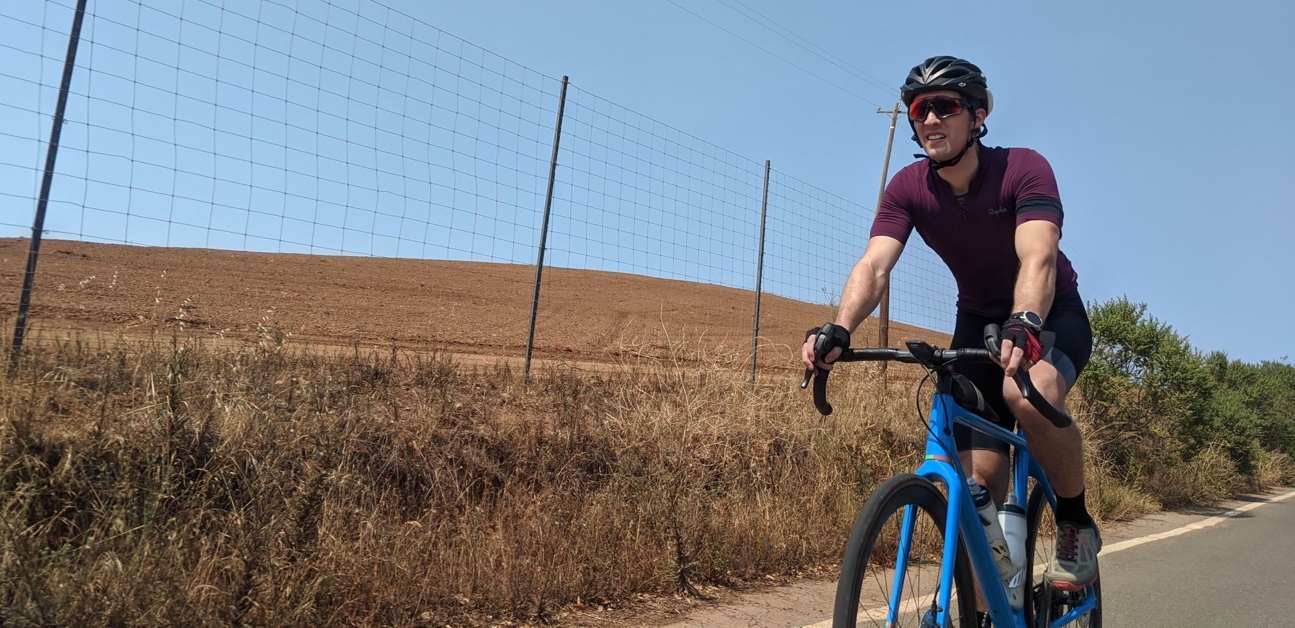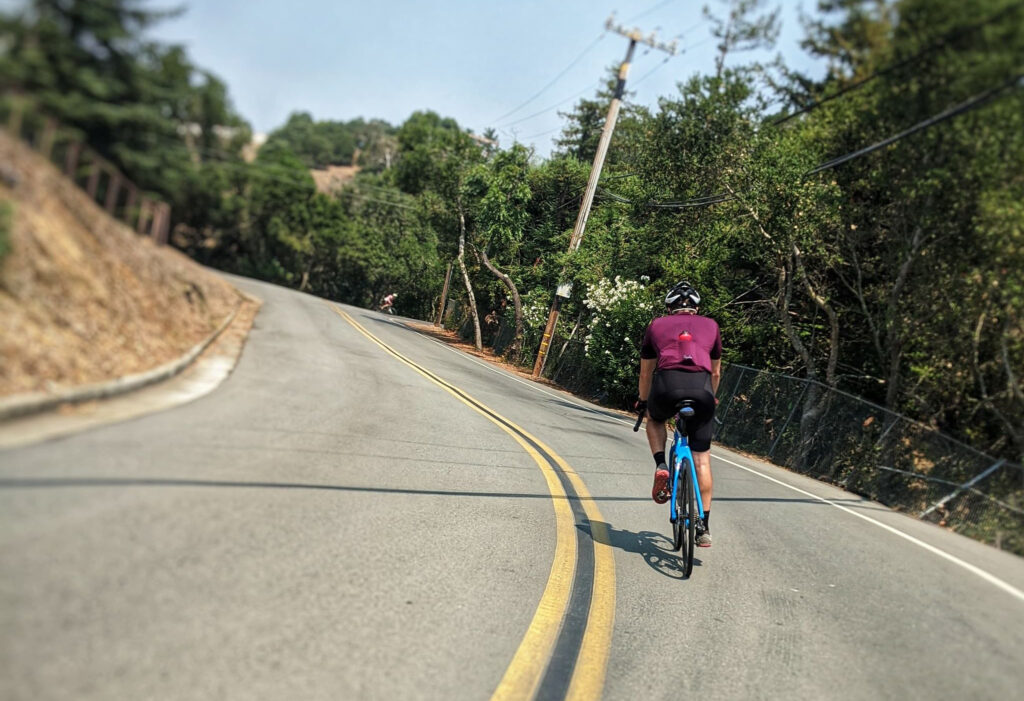Increasing FTP 80w and Gaining Confidence: Low-Volume Training with Jon Kaslow

Jon Kaslow started cycling on a whim. With no background in endurance sports and just a few short fitness rides and commutes under his belt, this dedicated but time-crunched rider successfully used TrainerRoad to prepare for a very tough event and dramatically improve his FTP. His clever strategies can help any athlete with a busy life off the bike, and are a prime example of how a little training time can go a long way.
Share your success story and tell us how TrainerRoad helped you reach your goals.
A Spark of Interest
In early 2019, a viral cycling video somehow found its way onto Jon Kaslow’s twitter feed. The video featured former pro cyclist Phil Gaimon riding the world’s longest paved climb (Alto de Letras in Columbia) before collapsing on the ground in exhaustion. Although Jon was not a cyclist, he was intrigued. He started watching more cycling Youtube videos and quickly signed up for Phil’s Cookie Fondo, a challenging 2-day cycling event in California’s Santa Monica Mountains.
Although Jon was a healthy 28 year-old, his most recent major athletic endeavor was high school tennis and he had almost no background in endurance sports at all. Jon’s experience with cycling was limited to an occasional hour-long weekend fitness cruise and some short commutes in college. Adding on the fact that his schedule left little training time, Jon knew he faced a real challenge. He bought a smart trainer and a road bike and decided to get to work.
Adaptive Training
Get the right workout, every time with training that adapts to you.
Check Out TrainerRoadLimitations and Logistics
Jon lives in Silicon Valley and works as a data scientist. The downside of this is a grueling work week often surpassing 50 or 60 hours. The upside is that as someone who uses statistical techniques to solve problems for a living, Jon’s personality is uniquely well-suited to the data and structure of a training plan. After a couple weeks of research he decided to join TrainerRoad for this very reason, and because of TR’s reputation for making athletes faster in the real world.
Timing
Jon began his training with a low-volume Sweet Spot Base plan. The first challenge he immediately faced was fitting workouts into his busy days. Initially, Jon tried training in the mornings, but this proved to be unsustainable. Training later in the evening left him wound up at bedtime, so he settled on 6:00 pm as an ideal workout time. By experimenting and finding what worked best for him, Jon set himself up for success from the very start.
Scheduling Takeaway:
- Every athlete and schedule is different. Experiment with training at different times to find what works best for you.
Prioritization
Scheduling training is only half the battle. As anyone with work or family obligations knows, it’s still easy to let other things interfere. Jon reduced distractions by treating training as an appointment and prioritizing it over other potential commitments.
“I tried to remove the element of choice,” he explains. This meant intentionally leaving work at 5:45 every training day, even if he knew that some tasks might be left incomplete until after his workout. Jon also made getting on the bike as easy as possible, by keeping his old commuter bike permanently set up on his smart trainer to eliminate any prep time. This also kept his road bike free for riding outside on the weekends without any wheel installation hassles.
Prioritization Takeaways:
- Build your training time into your schedule as a priority commitment. Remove the element of choice so it becomes part of your routine.
- Make the process as easy as possible by getting everything ready in advance and having your bike ready to go.
The Beauty of Low-Volume
Jon is a perfect example of how effective low-volume training can be, no matter the length of your target event. Low-volume plans are designed for efficiency and only require about 3.5 to 4 hours each week, so they worked well with Jon’s schedule. Also, as a new cyclist his body would be unlikely to respond well to big training loads. By keeping his volume low and taking his rest weeks seriously, Jon was able to recover and improve at an amazing rate. In the end, low-volume training addressed the energy systems and riding styles Phil’s Fondo required, in an efficient way Jon’s body could handle.
The other advantage of low-volume training for Jon was its flexibility. The low time commitment gave him freedom to easily reschedule workouts if he was busy during the week, without skipping any planned rides. When he had spare time, he added an extra outdoor ride for fun on Saturday. After beginning with Sweet Spot base and progressing through Sustained Power Build and Century Specialty plans, Jon’s FTP rose by 80 watts in 7 months of exclusively low-volume training. He also felt a big increase in endurance and continually improved his pace on local climbs.
Low Volume Takeaways:
- Low-volume training offers lots opportunity for recovery and is great for athletes new to the sport
- Low-volume training makes it easier to reschedule workouts during the week, while still completing the entire plan.
Event-Specific Training
Jon’s systematic approach extended to other aspects of his training besides timing and fitness. Nutrition was a major concern, and he used preparatory rides to experiment with different fueling strategies. A thread on the TrainerRoad Forum teaching how to make your own carb mix turned out to be a game changer. For the first time, Jon was able to fuel himself with ample carbs and fully realize the abilities he’d trained in his legs.
Jon rode a preparatory event 3 weeks before his main goal as a training experiment, pacing himself wisely and eating plenty of food. He learned not to stop too long at aid stations, avoiding the dreaded stiff legs that come with an overly relaxing break. Although he entered his training event feeling nervous, he left with total confidence in his ability to complete his primary goal a few weeks later. The training had clearly worked, and now it was time to execute.
When the weekend of Phil’s Fondo finally arrived, Jon was ready. He knew he could make it up the climbs because he’d done plenty of sweet spot intervals of similar intensity and duration. He understood pacing and fueling, and even felt strong enough to push harder at the end of the second day. When the rider behind him in the paceline asked him to slow down, Jon realized how far he’d come.
Event Preparation Takeaways:
- Preparation requires more than just fitness. Consider nutrition, pacing, and logistics for your event.
- Confidence gained in training can go a long way when your actual event arrives.
- Reframing challenges in comparison to workouts you’ve successfully completed is a great way to build confidence.
Looking Ahead
Jon bought a second bike with the intention of entering some crits this year, but COVID-19 put those plans on hold. Despite this, cycling continues to motivate his goals. Now that he’s working from home with more free time and more experience in his legs, he’s stepped up to mid-volume training; this October he’ll be riding a self-supported, socially-distant “Fondo” of his own with 2 friends. For Jon, the experience of structured training continues to pay dividends.
“The main thing is having the confidence,” he explains. “I know I’m totally capable, so it takes the anxiety off. Now when I look at cycling events I can say to myself “I can do that” which is a great feeling. I can’t imagine getting there without TrainerRoad.”
Tell us your story. Success isn’t always a race win. It can be life-changing health improvements, reaching a personal goal, or more.
For more cycling training knowledge, listen to Ask a Cycling Coach — the only podcast dedicated to making you a faster cyclist. New episodes are released weekly.
